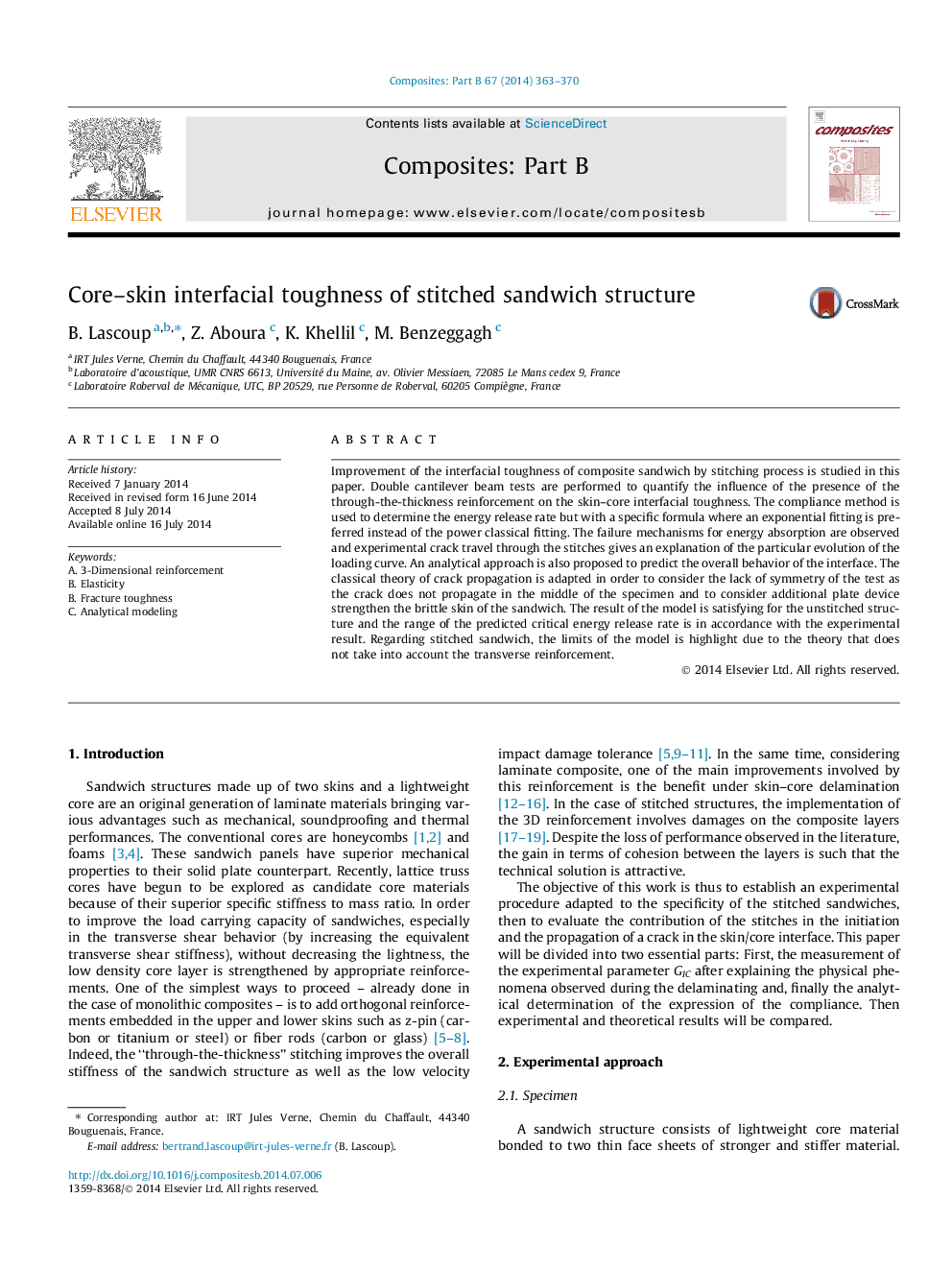| Article ID | Journal | Published Year | Pages | File Type |
|---|---|---|---|---|
| 7213426 | Composites Part B: Engineering | 2014 | 8 Pages |
Abstract
Improvement of the interfacial toughness of composite sandwich by stitching process is studied in this paper. Double cantilever beam tests are performed to quantify the influence of the presence of the through-the-thickness reinforcement on the skin-core interfacial toughness. The compliance method is used to determine the energy release rate but with a specific formula where an exponential fitting is preferred instead of the power classical fitting. The failure mechanisms for energy absorption are observed and experimental crack travel through the stitches gives an explanation of the particular evolution of the loading curve. An analytical approach is also proposed to predict the overall behavior of the interface. The classical theory of crack propagation is adapted in order to consider the lack of symmetry of the test as the crack does not propagate in the middle of the specimen and to consider additional plate device strengthen the brittle skin of the sandwich. The result of the model is satisfying for the unstitched structure and the range of the predicted critical energy release rate is in accordance with the experimental result. Regarding stitched sandwich, the limits of the model is highlight due to the theory that does not take into account the transverse reinforcement.
Related Topics
Physical Sciences and Engineering
Engineering
Engineering (General)
Authors
B. Lascoup, Z. Aboura, K. Khellil, M. Benzeggagh,
